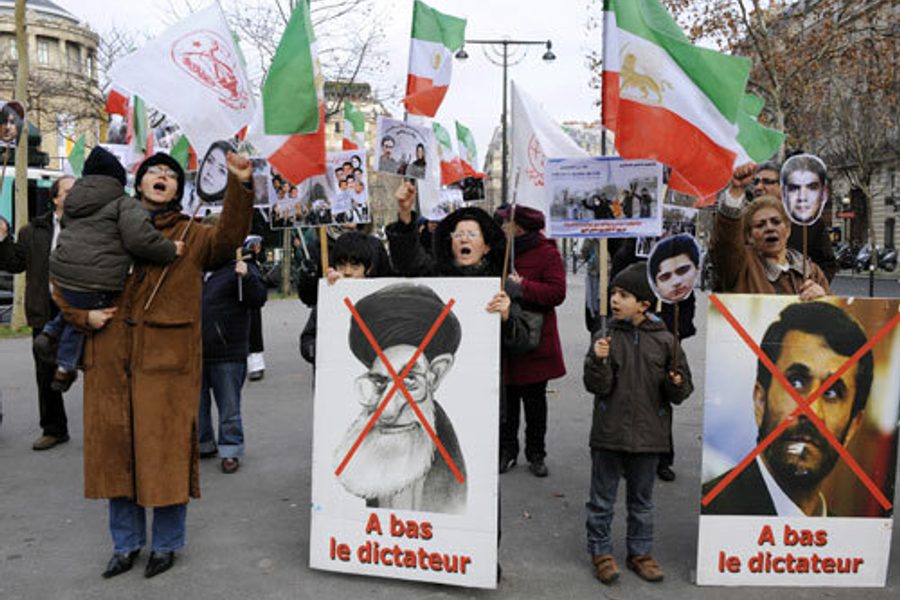
Iranian advocates of democracy have taken to the streets regularly since the fraudulent re-election of President Mahmoud Ahmadinejad, promoting a “green revolution” against the heavy-handed, repressive theocracy that rules the country. But there’s another wave of protests that, if linked to the green movement, could greatly strengthen the opposition and give it a more pronounced social-democratic character.
Late last week, for example, workers from the Shiraz Iran Telecommunications Industries blocked highways and sat in the provincial governor’s mansion for three days to protest 13 months of unpaid wages. A few weeks earlier, workers at the Mobarake steel complex in Isfahan staged hunger strikes on two days over pay and pension cuts.
Protests like these are common in Iran and likely to increase dramatically in coming months, according to Homayoun Pourzad, a representative of the Network of Iranian Labor Unions who has been trying to build support for Iranian workers in the U.S.
But when asked if the Iranian labor movement is strong, he answers, “Yes and no.”
There are only a few formal, public unions in Iran, most notably the teachers’ union, a sugar workers union, and the Tehran bus driver’s union, whose leader, Mansour Osanloo, has been in jail for more than two years. Iran’s first unions emerged a century ago and exercised some influence until the CIA-assisted overthrow in 1953 of the democratically elected, nationalist government, Pourzad says.
But unions were almost completely suppressed after the Islamic Revolution in 1979, and only began re-organizing about seven years ago, after the Iranian government signed an agreement with the International Labor Organization to permit workers to organize.
Yet even if unions are weak, Pourzad says, “there are workers’ struggles that go on all over the country constantly, every minute.” Conditions for workers — roughly three-fourths of whom work on short-term contracts — are quite bad, buffered only by the government loans to keep factories and other workplaces operating, often at half capacity. But recently the government decided to reduce the loans, which will likely eliminate jobs and depress wages more.
“Because of this economic crisis, there’s going to be an upsurge of labor activity in general,” Pourzad predicts. “We’re going to see spontaneous manifestations and bursts of energy from the labor movement this year.”
“I had always believed in the labor movement,” says Pourzad, who now works with a nascent organization of printers. “I had friends and relatives who were sympathetic to the labor movement, in particular one older individual, a mentor for myself, who was involved in pre-1953 labor activities. I just instinctively and intellectually believe that was the way to go for myself and the best possible solution for the country’s problems.”
Only a few labor union activists are public; the rest are more anonymous in their work. “There are many, many individual campaigns going on – people doing educational and organizational work,” he says. “They’re not admitting what they’re doing.” Government monitoring of worker activity is “unbelievable.”
The futures of reform politics and unions are intimately linked, but green leaders “don’t want to be seen as fomenting labor unrest,” Pourzad says, even if many support union rights and social democratic policies. The Iranian working class does not support Ahmadinejad, even though the president makes populist appeals to “marginal classes, the lower middle-class, shopkeepers, low-paid government workers and people in small towns.”
Increasingly, Pourzad says, “We have two Irans,” and a clash between tradition and modernization. But secular progressives have to reach out to the religious, traditionalist Iranians.
First, most workers are deeply religious, he says. Second, the traditionalist forces – from the army to the Revolutionary Guard (“a scary crowd”) and other “proto-fascists” in the street – are well-armed.
“We can’t have these guys as permanent enemies,” Pourzad says. “We have to come up with ways of accommodation, like a Truth Commission.” The labor movement, he argues, can play a vital role in diminishing the appeal of extremes of right or left.
On the ground events and relationships in Iran seem “kaleidoscopic,” he says, but it’s the beginning of a major change. “I don’t think anyone in the world thinks the opposition is coming to power soon,” he says. “It’s just the beginning of the arc. But every day things are going on all around you. It looks like a revolution.”
David Moberg, a former senior editor of In These Times, was on staff with the magazine from when it began publishing in 1976 until his passing in July 2022. Before joining In These Times, he completed his work for a Ph.D. in anthropology at the University of Chicago and worked for Newsweek. He received fellowships from the John D. and Catherine T. MacArthur Foundation and the Nation Institute for research on the new global economy.








